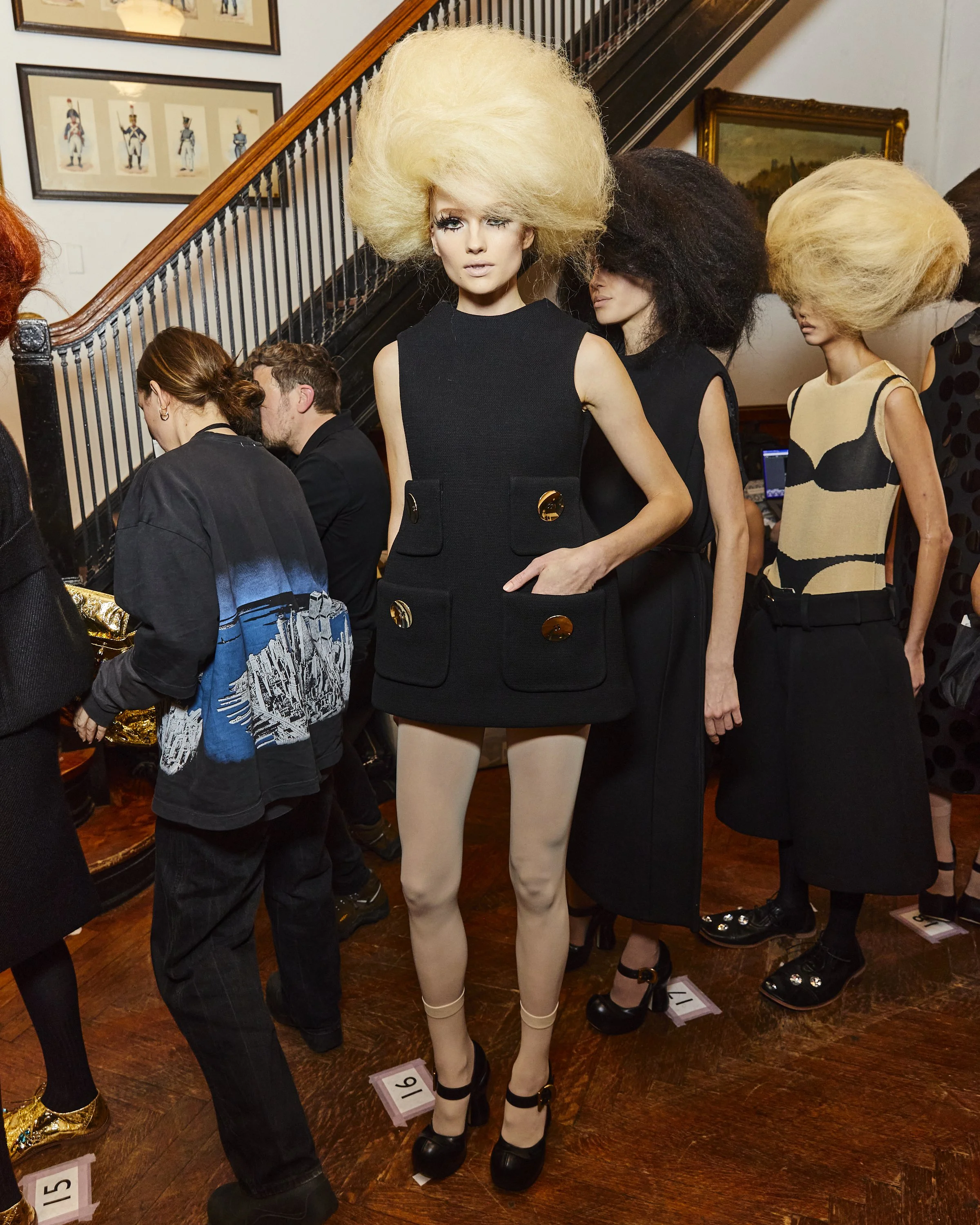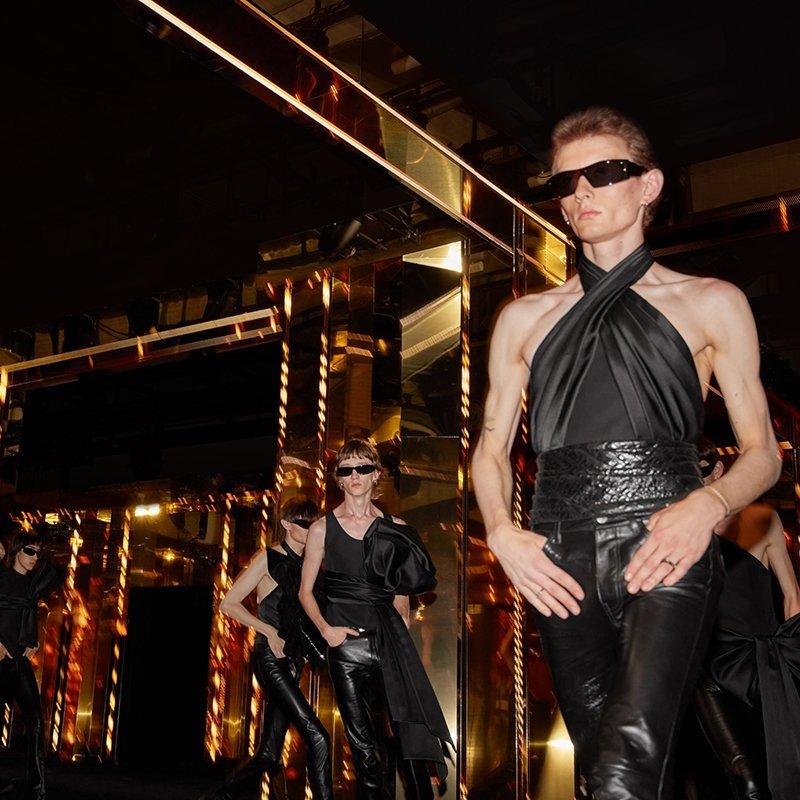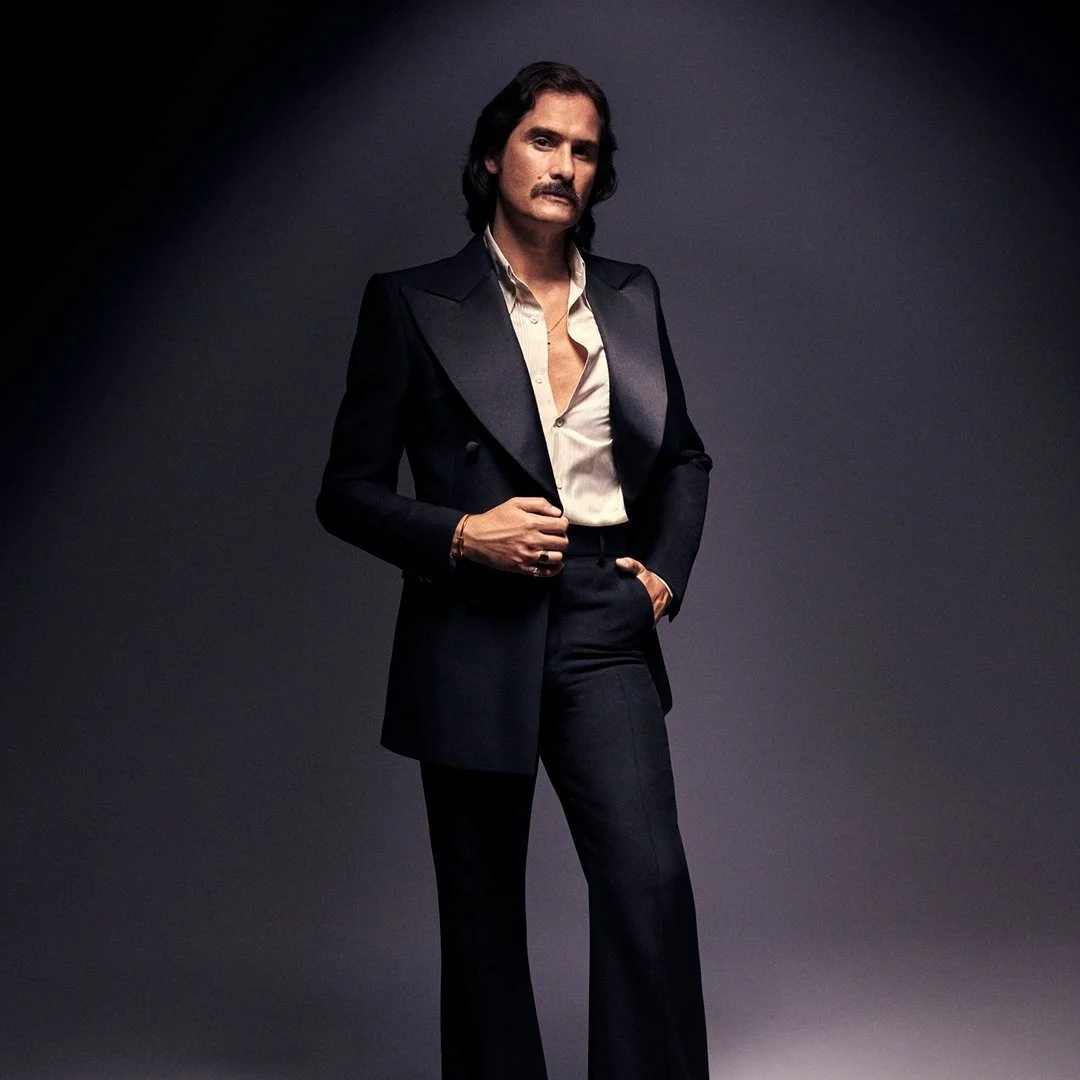Diesel’s Glenn Martens and Tom of Finland’s Durk Dehner on celebrating queer artists with exhibition ‘All Together’.
Touko Valio Laaksonen, better known as Tom of Finland, remains to be one of the most influential badass queer artists of the 20th century. Known for his hyper-erotic beefcake drawings, Tom of Finland has intrigued many viewers by making them either very curious or extremely uncomfortable with his incredible, photorealistic and homoerotic art.
On the occasion of Mr. Finland's birthday (8th May, 1920), the Tom of Finland Foundation and its co-founder Durk Dehner have put together two group exhibitions of selected works from the foundation’s extensive collection of LGBTQIA+ art, created with the support of Diesel and creative director Glenn Martens. The exhibitions curated by The Community, a multidisciplinary art collective based in Paris, are being shown publicly outside of Los Angeles, for the first time ever. The first exhibition opened the 2022 Venice Biennale, with the second instalment in Paris following suit.
Prior to the opening of the Paris exhibition on Monday, Durk Dehner and Glenn Martens spoke to Perfect about what it really means to be ALL TOGETHER, the importance of real storytelling, and protecting the queer art community by any means necessary.
Edward: How did the idea behind All Together come about? What does this mean through your own lens?
Durk Dehner: It all started by reflecting the history. We're bringing all of the Tom of Finland family, friends and artists of the foundation from the past and for the present, together in one exhibition. We had the idea that the term "All Together" is that simply, we're a family. We wanted to extend out into the world, the idea that really, we're all together. With so many conversations surrounding representation, we believe it was really a perfect time. We also are celebrating, because this is our debut, as we have not had the opportunity up to this point. Alongside the amazing support of the community, and with the sponsorship of Diesel, we were able to actually present our work to the world and are, both in Paris and in Venice, a compilation of 80 artists exhibiting together, from all across the world.
Glenn Martens: It's about the whole world respecting each other, together. We are all her to enjoy life, we have such short time on this Earth, so we should be enjoying it, which can only happen if we respect each other and work together.
Edward: Glenn, do you feel like you have a responsibility as a designer and as an artist, whether that be politically, or anything else within the community, as this project tells a beautiful story of how erotic or queer artists started back in the day, and where we are as a society today. It was a really nice bridge somehow to understand what was happening then, why it was a struggle, and how artists were not able to get into the spotlight at the time. How do you think this has developed today?
Glenn Martens: I think the reason why we supported the Tom of Finland Foundation is definitely because of the work we're doing. I believe it was important to remember, or to remind people of why most queer kids move to big cities like New York, Paris and London. They all live and create there, because of the openly queer scene that Tom of Finland and the foundation have supported throughout the decades. I think this exhibition portrays the beauty we have, showing what the queer community has achieved and saying 'look, this is this where we come from, and it's still a lot of work to do'. On top of that, working with foster artists from countries where queer people are still prosecuted was so incredibly important. I love high arts, but I wouldn't want to connect to an art form that is just there for aesthetic reasons. I really wanted to talk about the life of the people and creators of those pieces. I do have a big, loud voice next to Diesel's very big platform, being global and reaching a lot of people and I think it's important that you are aware that you speak to everyone when you are in such a position. My position is given the responsibility of not just creating beautiful fashion, but also speaking out about the world. The reason why I took on this role was exactly because I had the power of talking and this is the approach I wanted to bring to Diesel.
Edward: This is the first time that the collection has been shown outside of Los Angeles. Is there a reason behind showcasing in Europe now? How did this collaboration with Diesel come to fruition?
Durk Dehner: We have wanted to, but we have not been able to actually find the right sponsorship and the right collaborators alongside the community, which is an organisation right here in Paris. Most of the core team were from Finland. They had moved to Paris and were creating a space, where creative people working together, coming up with experiences and exhibitions that the public could actually engage with and learn more. They came to Los Angeles for the Frieze Art Fair and wanted to come to the foundation and have a tour. I met with them and showed them around, and as they walked out they said 'we've got to do something with this'. A short while after, they came back to us and said, 'We would love to bring this collection to Paris'. The next step was to see how they could financially make it happen. And through contacts, and more specifically a friend called Annabelle, she introduced them to Glenn Martens from Diesel to what the exhibition was all about. Hearing it out, he saw a responsibility, not only as a creative director but also as an openly gay man. This body of work is timeless, coming from dozens of artists that are from the past, but also very much relevant in the present, deserving to be presented to the wider public.
Edward: I was looking at one of the old Diesel advertisements and I wanted to touch on the history of Diesel, they don't have a history of shying away from provocation or advertising or communication, which speaks in a very expressive, loud way, which always brought interest to the campaigns. How do you relate to that?
Glenn Martens: I think the fun in that is being relevant and having to advertise in a boundary-pushing way is crucial. Back then in the 90s things developed at a very different pace compared to nowadays. Pre-internet, imagery took on a different form. I do think that being loud was really a big part of it. And I think it's really fantastic that with Instagram, we are talking to so many countries, some of them not at all gay, educating and changing the narrative. By talking about Tom of Finland and sharing the queer imagery, we are kind of screaming out loud, helping our audience understand the importance much deeper.
Edward: That's interesting, because Italy hasn't necessarily been a country that has always protected LGBTQIA+ individuals, even if there are vast communities here. As a brand when you approach them with a project such as this, which really talks about and speaks of that community, was that something that was easy to communicate to a company like Diesel?
Glenn Martens: I was very clear in my very first campaign when I arrived at Christmas 2020. It was a collection that I didn't design, but I directed the art direction, which was all about the beauty of dating, the fluidity amongst people, genders and expressions. This was the very first image anyone ever saw from my time at Diesel, so I was always very certain in my mission for representation from the start. It feels like 'Okay, I'm cracking open the door within the space, and everybody accepts it.' I am here, being the creative director, to guide it further to what it is today, and this is what I believe today is all about – and being consistent with it. The company has been very supportive, following me, and I think we all very much aligned in one direction.
Edward: Durk, you have been a dedicated storyteller, an incredible preservationist of homoerotic art. Speaking to many people, they all reference you with incredible kindness and respect.
“Growing up in LA pre internet I didn’t feel I could be my true self. When I met Durk (I believe through Bruce LaBruce), not knowing this place existed… I found a real safe place. A home away from home that was in my home. It’s a place where we can be unapologetic. A real safe place,” said Matt Lambert about your work.
This is your life and I am sure that you know how important the work that you do is for the community, and to safeguard artist and homoerotic art within the space. Where does this fearless drive come from? And how does the foundation operate?
Durk Dehner: Going back to the beginning of the foundation, Tom and I actually sat down and decided what we wanted the mission to be. It was truly to preserve and to protect and to promote the erotic artists. My presence and my way of extending friendship and openness to other artists really comes from that very personal relationship that I had with Tom and that we felt that these are our family, and these are our friends. And what we wanted to do is create an environment that really encourages them to open and to be free, to explore and to get inspired from each other and blossom. I really believe that the foundation is like a garden, and within the garden, we have an amazing variety of all of these different floral expressions, and when we artists come in and create within the space, they feel like they can be at home and they can feel a sense that they're protected.
What we are trying to accomplish within the community alongside our partners was to give that kind of feeling of freedom to the exhibition. We wanted to portray a reflection of the vibe, the feeling of that everyone would find some piece of work that they would be enamoured with and that that it might actually open something up in them.
Edward: Let's talk a bit about the process of the artists, starting with some of the historic artists that are represented in the exhibition. What are some of the highlights?
Durk Dehner: During the day when Tom was alive, these artists were friends with each other. Even if they were living on different coasts, we would have salon days where known artists and others that weren't so well known, would come and gather at the foundation house, and they would bring samples of their work and they would sit around and have an afternoon where they would talk about their techniques. The thing that was so noticeable to me as a newbie in it all was that there was a beautiful sense of camaraderie, appreciation and respect for each other's work, and that further gave the tone for the Foundation.
Another highlight of our work is having emerging artists competitions, the reason being is because these young artists who've never shown their erotic work or never sold it, are given an opportunity to have a forum, and also the respect of established people in the creative fields, to actually examine their work. In the end, not just the winners that get support, but everyone who actually participates. Alongside that, we also host cultural weekends, where we have a gathering of a multitude of artists, taking it international. This fall, we're going to be doing one in London and Los Angeles simultaneously. This is also a way that we push the galleries aside and we actually allow artists to have contact with their public, potentially interacting with new collectors.
Edward: Why do you feel it was difficult to accept erotic art as a true art form within the space? How have things changed nowadays, compared to before?
Durk Dehner: I'm not saying that it isn't still difficult now but Tom was the grandfather of kick starting this mission, being able to transition over that boundary. What the queer community did back in the 70s was starting to realise that they have their own culture within the equal rights movement, however the artists could not get their work exhibited because of its sexual nature, so galleries started to spring up in different cities around the Western world that would exhibit these works. Most of them specifically queer galleries, showing Tom's work alongside other artists' work from Japan like Go Mishima.
Edward: What do you think the future of the foundation is? How do you see the future of contemporary artists, digital spaces, and innovations surrounding young artists at the moment?
Durk Dehner: Somebody recently asked me in an interview whether I felt like artists were losing control of their works within the digital world and I thought about it and said that there is the threat of that problem, however there are safeguards that we can embed to prevent that from happening. We can actually use agencies to help release our work and get paid for it, but we also have to teach society to nurture and to care about these artists, and it is an education process that the foundation does and continues to do. Our future is totally dependent on our donors and supporters on whether they will actually fund our projects. I remember we did a small exhibition in Riga, Latvia about five years ago and it was amazing to just see erotic work there in a city that had not been able to display that work before. I noticed these three queer women who were to be from Latvia, Lithuania and Estonia, what made them smile within the exhibition, as they were in absolute joy seeing Tom’s work. They turned to me and said ‘He just makes us feel good inside’. So I think if society and different regions validate who we are, then we can actually nurture the art further. I think that the queer community is gifted with this wonderful ability to share who they are and what they express, and that expression isn't just for them, it's for all of us. And so society as a whole can be so much healthier and so much richer, just by taking advantage of who we are.













